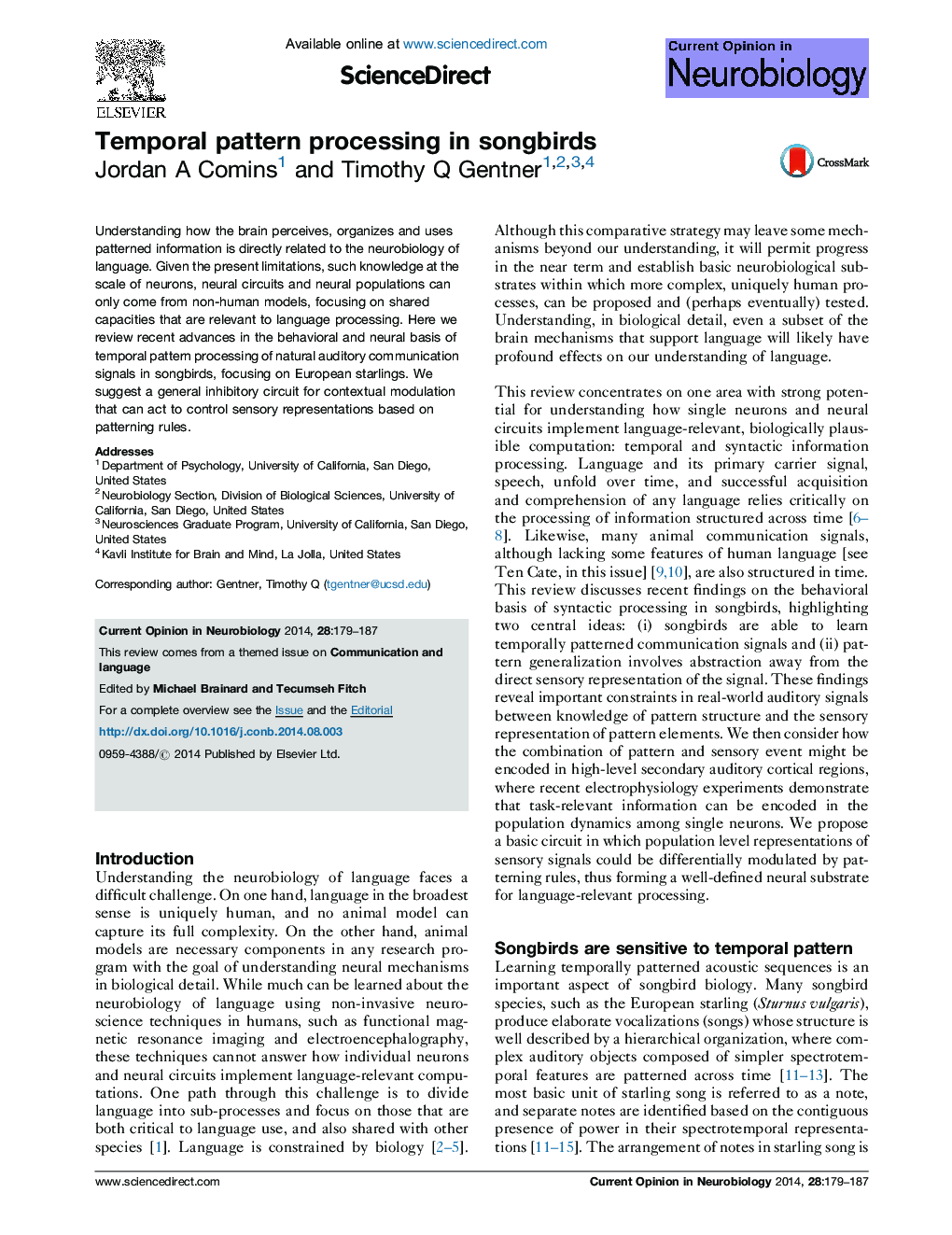| Article ID | Journal | Published Year | Pages | File Type |
|---|---|---|---|---|
| 6266690 | Current Opinion in Neurobiology | 2014 | 9 Pages |
â¢Formal models of temporal pattern complexity provide poor models for behavior and neurobiological mechanisms.â¢Syntactic processing in songbirds resembles human statistical and rule learning.â¢Sensory encoding of song elements provide tractable neural circuits for examining neurobiological mechanisms of pattern processing.â¢Songbirds are excellent models for language-relevant sensory coding and neural dynamics.
Understanding how the brain perceives, organizes and uses patterned information is directly related to the neurobiology of language. Given the present limitations, such knowledge at the scale of neurons, neural circuits and neural populations can only come from non-human models, focusing on shared capacities that are relevant to language processing. Here we review recent advances in the behavioral and neural basis of temporal pattern processing of natural auditory communication signals in songbirds, focusing on European starlings. We suggest a general inhibitory circuit for contextual modulation that can act to control sensory representations based on patterning rules.Current Opinion in Neurobiology 2014, 28:179-187This review comes from a themed issue on Communication and languageEdited by Michael Brainard and Tecumseh FitchFor a complete overview see the Issue and the Editorialhttp://dx.doi.org/10.1016/j.conb.2014.08.0030959-4388/© 2014 Published by Elsevier Ltd.
